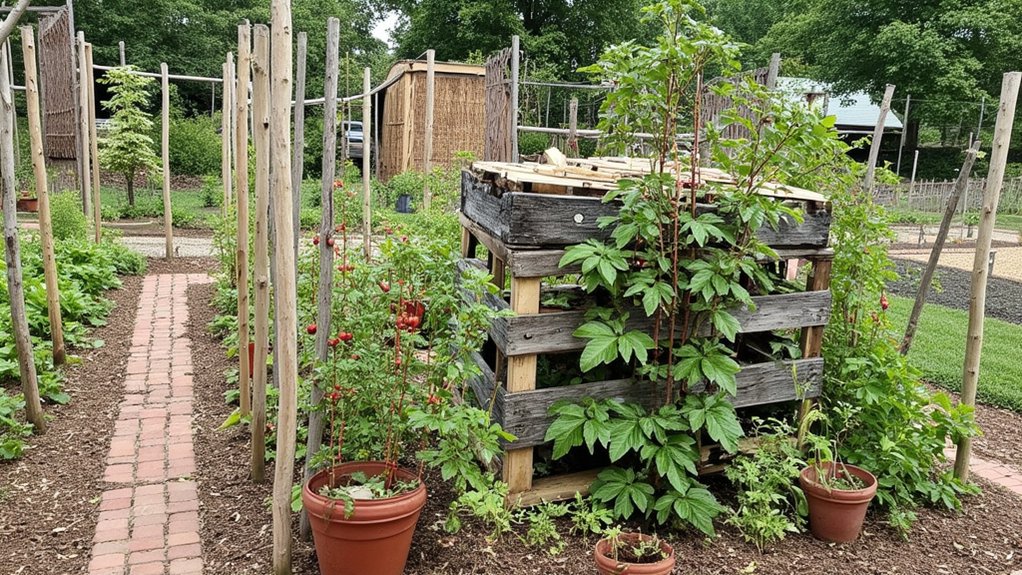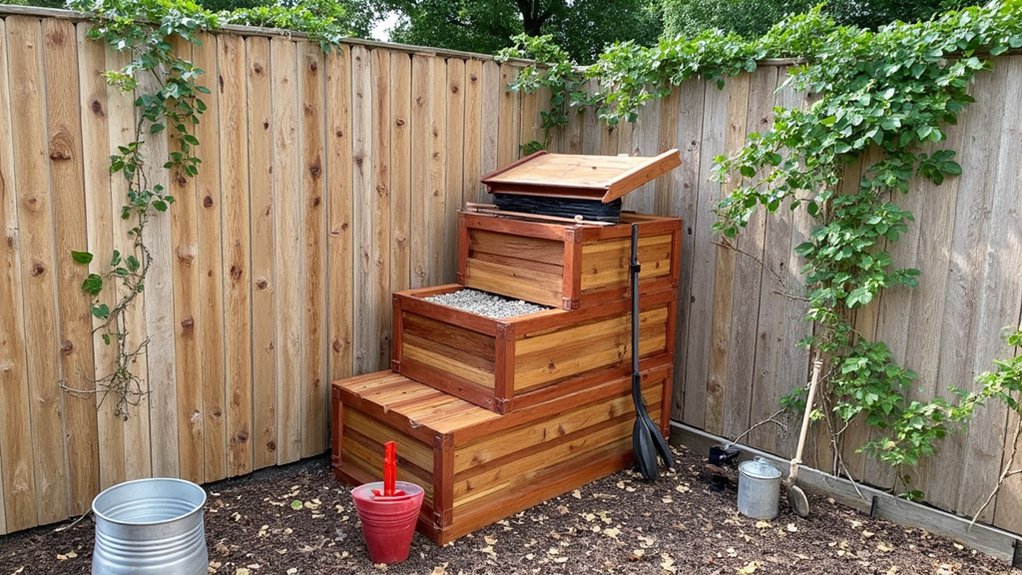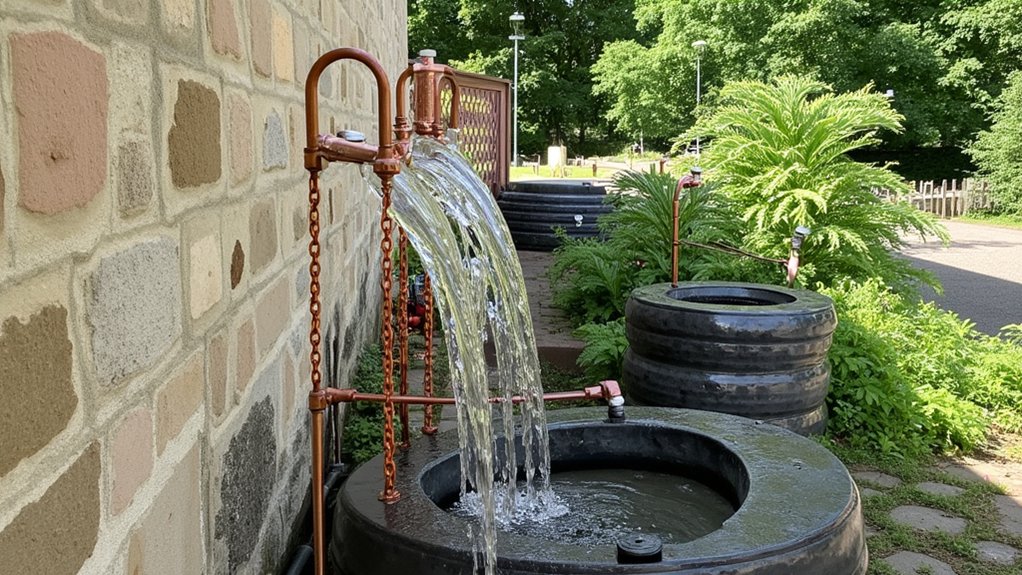When Sarah Thompson transformed her suburban backyard into a zero-waste garden, she reduced her household waste by 75% within six months. You’ll find that creating your own waste-free garden isn’t just about composting kitchen scraps and collecting rainwater – it’s an all-encompassing system that turns typical garden “waste” into valuable resources. While the initial setup requires careful planning, you’re about to discover how everyday items and natural processes can revolutionize your gardening approach.
Contents
- 1 Understanding the Zero-Waste Garden Philosophy
- 2 Setting Up Your Composting System
- 3 Smart Water Management and Collection
- 4 Upcycling Household Items for Garden Use
- 5 Natural Pest Control Methods
- 6 Seed Saving and Plant Propagation
- 7 Maximizing Garden Space and Crop Planning
- 8 Creating Your Own Natural Fertilizers
- 9 Reducing Plastic in Your Garden
- 10 Building a Year-Round Garden Ecosystem
Understanding the Zero-Waste Garden Philosophy

While traditional gardening often generates considerable waste, zero-waste gardening takes a holistic approach by transforming every garden byproduct into a valuable resource. You’ll learn to view fallen leaves, grass clippings, and even kitchen scraps as crucial materials rather than garbage.
The philosophy centers on creating closed-loop systems where nothing’s discarded. You’re effectively mimicking nature’s efficient cycles, where every output becomes an input. For example, your pruned branches become mulch, while fruit and vegetable scraps transform into compost within 3-6 months.
Think of your garden as a self-sustaining ecosystem where you’re the mindful steward, directing resources rather than disposing of them.
Setting Up Your Composting System

Because composting serves as the backbone of zero-waste gardening, you’ll want to establish an efficient system right from the start. Choose a shaded spot in your yard, at least 3 feet square, and set up either a bin or enclosed pile that’s easily accessible from your kitchen.
Layer your materials in a 3:1 ratio of browns (dried leaves, paper) to greens (food scraps, grass clippings). Keep the pile as moist as a wrung-out sponge, and turn it every 1-2 weeks with a pitchfork. You’ll know your compost is ready when it’s dark, crumbly, and smells earthy – typically in 2-6 months.
Smart Water Management and Collection

Since water conservation forms an essential part of zero-waste gardening, you’ll need to implement a robust collection and management system. Start by installing rain barrels at your downspouts, aiming for at least 50 gallons of storage capacity per 1,000 square feet of garden space.
Create swales and berms to direct rainwater flow, and layer your soil with 2-3 inches of mulch to retain moisture. You’ll find that drip irrigation systems, set on timers for early morning watering, can reduce water usage by 30-50%. Don’t forget to collect gray water from your kitchen for non-edible plants.
Upcycling Household Items for Garden Use
Before you spend money on new garden supplies, take a look around your home for everyday items that can serve double duty in your garden. Empty yogurt containers make perfect seedling starters when you punch 1/4-inch drainage holes in the bottom, while plastic milk jugs can become mini-greenhouses when cut horizontally.
Transform cardboard egg cartons into biodegradable seed starters, and use old newspapers to create 4-inch plant pots that decompose directly in the soil. Don’t toss those broken terra cotta pots—crush them into 1-inch pieces for excellent drainage material, or stand large fragments vertically as decorative edging.
Natural Pest Control Methods
While repurposing household items helps reduce garden waste, keeping your plants healthy means protecting them from unwanted visitors naturally. You’ll find dozens of pest-fighting allies right in your kitchen, including garlic, cayenne pepper, and neem oil.
Mix 2 tablespoons of minced garlic with 1 cup of hot water to create a potent spray that deters aphids and spider mites. For larger pests, sprinkle crushed eggshells around plant bases to ward off slugs and snails.
Don’t forget about beneficial insects – they’re your best defense. Plant marigolds near vegetables to attract ladybugs, and install shallow water dishes for birds that eat harmful insects.
Seed Saving and Plant Propagation
Three reliable methods of seed saving can transform your single growing season into years of sustainable harvests. The paper bag method works best for flowers and herbs – simply tie a brown paper bag over mature flower heads and wait two weeks for seeds to drop. For tomatoes and cucumbers, you’ll need to ferment the seeds in water for 3-5 days before drying.
Store your dried seeds in labeled paper envelopes at 40°F, and they’ll remain viable for 2-5 years. For propagation, try taking 6-inch stem cuttings from healthy plants, dipping them in rooting hormone, and placing them in moist potting soil under clear plastic.
Maximizing Garden Space and Crop Planning
Growing your own seeds sets you up perfectly for smart garden planning and space optimization. You’ll want to map your garden’s dimensions and track sun exposure patterns before designing your layout, ensuring each plant gets its required 6-8 hours of daily sunlight.
Implement vertical growing techniques by installing trellises for vining crops like cucumbers and pole beans. You can also maximize space by companion planting – try the classic “Three Sisters” method, combining corn, beans, and squash in the same plot.
For year-round production, divide your garden into zones and practice succession planting every 2-3 weeks, rotating crops to maintain soil health and prevent disease.
Creating Your Own Natural Fertilizers
Making your own natural fertilizers lets you transform everyday kitchen scraps and yard waste into nutrient-rich food for your garden. Start by collecting coffee grounds, eggshells, and banana peels, which provide essential nitrogen, calcium, and potassium respectively.
Create a basic tea fertilizer by steeping grass clippings in water for 24 hours, diluting the mixture 1:10 before application. For a more potent blend, combine one part each of crushed eggshells, used coffee grounds, and banana peels with two parts water in a sealed container, letting it ferment for two weeks.
You’ll want to apply these homemade fertilizers monthly during the growing season, always watering thoroughly afterward.
Reducing Plastic in Your Garden
While natural fertilizers help eliminate chemical waste, plastic reduction represents another key step toward a truly sustainable garden. Start by replacing plastic pots with biodegradable options like coconut coir, newspaper, or clay containers. You’ll find these alternatives last just as long and decompose naturally.
Transform old gutters into vertical planters, repurpose wooden crates for seedlings, and use glass jars for propagation. When you’re storing tools and supplies, opt for metal buckets, canvas bags, or woven baskets instead of plastic bins. Don’t forget to collect and reuse plastic items you can’t avoid, like irrigation tubes and plant markers.
Building a Year-Round Garden Ecosystem
A sustainable garden ecosystem thrives when you strategically layer different plant varieties throughout the seasons. Start by mapping your garden’s sunny and shaded areas, then plan your plantings in vertical tiers, from ground covers to tall perennials.
You’ll want to include early spring bulbs, summer-flowering annuals, and fall-blooming asters. Don’t forget winter interest plants like evergreens and ornamental grasses. Incorporate companion planting techniques by growing nitrogen-fixing legumes alongside heavy feeders.
Add habitat features like brush piles and water sources to attract beneficial insects and birds. These natural allies will help maintain pest control year-round and contribute to pollination.
